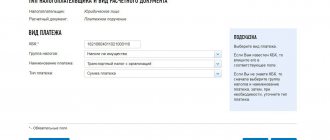Organizations that are located and operate on the territory of the Russian Federation are required to contribute tax fees to the state budget in many areas. One of the main fees in 2018 is corporate income tax. For organizations, it plays the main role; however, in some specialized taxation regimes it is not deducted to the treasury, since they require simplified accounting.
Like any other tax-related collection, deductions from profits are regulated through the following documents:
- Tax Code of the Russian Federation;
- legislative acts issued on the territory of specific subjects of our country.
In addition to the above-mentioned sets of rules and regulations in the field of tax legal relations, government agencies periodically issue various clarifications. Their goal is not additional regulation or the establishment of new norms beyond existing ones. These papers are designed to make the working life of accountants and lawyers working in paying companies easier.
Corporate income tax 2018
Basic version of income taxation and deviations from it
Clause 1 of Art. 284 of the Tax Code of the Russian Federation established the basic rate of income tax in 2021. in the amount of 20%. In the basic version, it is distributed between budgets as follows:
- Russian budget – 2%;
- regional budgets – 18%.
However, from 2021 to 2021, a different order is in force, according to which the federal budget receives 3%, and regional ones - 17%
This deviation is established by the law of November 30, 2016 No. 401-FZ “On Amendments...”.
Also 20% tax is charged:
- From organizations producing hydrocarbons in a new offshore field.
- From controlling persons on the profits of controlled foreign companies.
For the last two categories, distribution between budgets does not apply; all 20% of the tax is credited to the federal budget.
Subjects of the Russian Federation have the right to lower rates for crediting to their budgets for certain categories of taxpayers. In general, the “regional” rate can be reduced to 13.5% (in 2017-2020 - to 12.5%), and for residents of special economic zones - to lower values.
In addition, reduced “regional” rates (from 0% to 10%) are applied to organizations participating in regional investment projects (clause 3 of article 284.3 and clause 3 of article 284.3-1 of the Tax Code of the Russian Federation).
Sample of filling out a payment slip for income tax credited to the federal budget in 2021. can be downloaded here.
Other filling options will differ in the purpose of payment (type of budget) and BCC.
Personal income tax on vacation and sick leave benefits
In general, personal income tax must be transferred from wages no later than the day following the date of payment. For example, the employer paid the salary for January 2021 on February 6, 2021. In this case, income was received on January 31. The tax must be withheld on February 6th. And the last date when personal income tax needs to be transferred to the budget is February 7, 2021.
However, personal income tax withheld from temporary disability benefits, benefits for caring for a sick child, as well as from vacation pay must be transferred no later than the last day of the month in which the income was paid. For example, an employee goes on vacation from January 25 to February 15, 2021. Vacation pay was paid to him on January 20. In this case, consider the income received on the date of issuance of vacation pay - January 20. Tax must be withheld from the payment on the same day. And personal income tax must be transferred to the budget no later than January 31, 2018. Below we provide a table with the deadlines for paying personal income tax on vacation and sick leave benefits in 2021.
Deadlines for paying personal income tax on vacation and sick pay in 2018
| For January 2021 | No later than 01/31/2018 |
| For February 2021 | No later than 02/28/2018 |
| For March 2021 | No later than 04/02/2018 |
| For April 2021 | No later than 05/03/2018 |
| For May 2021 | No later than 05/31/2018 |
| For June 2021 | No later than 07/02/2018 |
| For July 2021 | No later than July 31, 2018 |
| For August 2021 | No later than 08/31/2018 |
| For September 2021 | No later than 01.10.2018 |
| For October 2021 | No later than 10/31/2018 |
| For November 2021 | No later than November 30, 2018 |
Taxation of dividend income
Income tax for 2021 in the form of dividends is assessed in accordance with clause 3 of Art. 284 Tax Code of the Russian Federation:
- For Russian organizations - 13% of income received both from residents of the Russian Federation and from foreign companies, as well as income from shares, the rights to which are certified by depositary receipts.
- For foreign companies – 15% of income received from participation in the capital of Russian organizations.
If a Russian organization owned more than 50% of the authorized capital of the paying company during the year before paying dividends, then income on them is taxed at a rate of 0%. If the payer of dividends is a non-resident company, then it should not be included in the so-called. “black list” of offshore companies (order of the Ministry of Finance of the Russian Federation dated November 13, 2007 No. 108n).
Calculation of profit before taxes
Profit before taxes will be determined by the formula:
Value for the income tax period = tax base * tax rate - advances (for previous periods)
The calculation formula is quite simple, but you need to remember an important point. All indicators are calculated using the incremental method. If the result is a value with a minus sign, the company has incurred a loss and does not have to pay tax. Losses from past periods reduce the tax base in a special manner. If a company applies several tax rates at once, calculations must be performed separately for each of them.
Taxation of income from debt obligations
Income tax for 2021 on debt obligations is calculated in accordance with clause 4 of Art. 284 Tax Code of the Russian Federation:
- In the amount of 15% for income on the following types of securities:
– government securities of member countries of the Union State, constituent entities of the Russian Federation and municipal securities;
– mortgage-backed bonds issued after January 1, 2007;
– bonds of Russian resident companies issued in the period 2017-2021. and traded on the organized market
– income received from trust management of mortgage coverage, if the relevant certificates were issued after January 1, 2007.
- The rate of 9% is valid for the following types of securities:
– municipal securities issued before January 1, 2007. for a period of more than 3 years;
– mortgage-backed bonds issued before January 1, 2007;
– income received from trust management of mortgage coverage, if the certificates were issued before January 1, 2007.
- Income from the following debt obligations is taxed at a 0% rate:
– state and municipal bonds issued before January 20, 1997.
– government foreign currency loan bonds of 1999, issued to ensure the conditions for settling the foreign currency debt of the former USSR and the Russian Federation.
- An increased rate of 30% is applied to income from securities of Russian organizations recorded in securities accounts of foreign holders, if information about them was not provided to the tax agent (clause 4.2 of Article 284 of the Tax Code of the Russian Federation).
Tax under simplified tax system
Transfer advance payments for the single tax no later than the 25th day of the first month following the reporting period (quarter, half-year and nine months). That is, no later than April 25, July 25 and October 25. This procedure is established by Article 346.19 and paragraph 7 of Article 346.21 of the Tax Code of the Russian Federation.
There are different deadlines for paying the single (minimum) tax at the end of the year. As a general rule, organizations must remit tax no later than March 31 of the following year, and entrepreneurs no later than April 30 of the next year. This follows from the provisions of paragraph 7 of Article 346.21 and paragraph 1 of Article 346.23 of the Tax Code of the Russian Federation. We present the deadlines for paying the simplified tax system in 2021 in the table.
Deadlines for payment of the simplified tax system in 2021
| For 2021 (only organizations pay) | No later than 04/02/2018 |
| For 2021 (paid only by individual entrepreneurs) | No later than 05/03/2018 |
| For the first quarter of 2021 For the first half of 2021 | No later than 04/25/2018 No later than 07/25/2018 |
| For 9 months of 2021 | No later than October 25, 2018 |
Taxation of income of foreign companies
If a non-resident company operates in the Russian Federation through a permanent representative office, then its profits are taxed on a general basis, similar to Russian organizations
If there is no representative office, then tax is levied depending on the type of income:
- In the amount of 10% - on income from the use or rental of vehicles for international transport.
- In the amount of 20% - for all other income of a foreign company, except dividends and income on debt obligations.
All tax amounts on dividends, debt obligations and income of non-residents who do not have a permanent establishment are credited to the federal budget (clause 6 of Article 284 of the Tax Code of the Russian Federation).
Trade tax on the territory of Moscow
The trading fee must be determined and paid every quarter. There are no reporting periods for the trade fee. Transfer the calculated amount of the trading fee to the budget no later than the 25th day of the month following the taxable period (quarter).
| Deadlines for payment of trade tax in 2018 | |
| For the fourth quarter of 2021 | No later than 01/25/2018 |
| For the first quarter of 2021 | No later than 04/25/2018 |
| For the second quarter of 2021 | No later than July 25, 2018 |
| For the third quarter of 2021 | No later than October 25, 2018 |
“Zero” income tax benefit
For certain categories of legal entities or types of income, there is a preferential income tax rate for 2021, namely 0%. Some cases of its application (for dividends and debt obligations) were discussed above.
In addition to them, the “zero” benefit applies in the following cases:
- For educational and medical organizations (Article 284.1 of the Tax Code of the Russian Federation).
- For residents of tourist and recreational economic zones united in a cluster - in terms of the tax credited to the federal budget.
- For agricultural and fisheries producers in terms of their agricultural products and their processed products.
- For participants in regional investment projects (clause 2 of Article 284.3, clause 2 of Article 284.3-1 of the Tax Code of the Russian Federation), participants in the free economic zone, residents of the priority development territory and the free port of Vladivostok (Article 284.4 of the Tax Code of the Russian Federation). For all categories listed in this paragraph, the benefit applies only to the “federal” part of the tax.
- For organizations providing social services to citizens (Article 284.5 of the Tax Code of the Russian Federation).
- For the Central Bank of the Russian Federation.
- For participants of the Skolkovo project after the termination of the use of the right to exemption and before exceeding the established limit (clause 2 of Article 246 of the Tax Code of the Russian Federation and clause 5.1 of Article 284 of the Tax Code of the Russian Federation).
- For income from operations from the sale or other disposal of participation interests in the authorized capital of Russian companies (clause 4.1 of Article 284 of the Tax Code of the Russian Federation).
Tax base calculation
Before calculating income tax, you will need to calculate the size of the tax base. Conventionally, the tax base is divided into intermediate and final.
The intermediate base will be calculated using the following formula:
Intermediate base = income – costs
When calculating, the following important points must be taken into account:
- To determine the amount of income received, it is necessary to add up sales and non-operating income.
- To determine the amount of costs incurred, it is necessary to add up non-operating, material, depreciation and labor costs.
- The income specified in Article 251 of the Tax Code of the Russian Federation and the expenses prescribed in Article 270 of the Tax Code of the Russian Federation are not taken into account.
The tax base for income tax (total base) will be calculated using the formula:
Final base = intermediate base – amount of loss from previous years
If the value of the tax base has a minus sign, there is no need to calculate the tax. This means that based on the results of the reporting period, the company received a loss, the tax on which is not calculated or paid.
The organization's income and expenses are calculated for the established reporting period. The date of income or expense can be determined in two ways:
- Cash method . Income and expenses are taken for the period of time in which they were received or otherwise officially registered in the cash register or in a bank account.
- Accrual method . When using this method, the date of official registration of income and enrollment are in no way correlated. Thus, any financial manipulations are recognized when they were actually carried out.
The organization has the right to use only one of the described methods for all operations performed. In addition, the cash method is allowed only in those companies whose revenue amounted to no more than one million rubles for the last 4 quarters, that is, for the year.
NGOs are an important component of the state budget
Organizational income tax (NGO) plays an important role in the formation of the state budget of the Russian Federation, federal and regional budgets. This tax collection ranks 4th in the structure of cash receipts to the Russian treasury.
The main contribution to the budget system of the Russian Federation is made by the following taxes and fees:
- customs payments are the first number among all fees for filling the budget;
- value added tax (VAT) comes in second place;
- the third are social taxes and fees;
- income tax ranks fourth;
- The top five is completed by personal income tax. persons (personal income tax).
Needless to say, how important it is for government regulators to receive full and timely revenues from all these taxes, including NGOs.
The government constantly regulates the income tax rate, since the formation of industrial potential and the success of the country’s economy directly depend on this. At the same time, the state is forced to control and, at certain periods, reduce the tax burden on Russian producers. In addition, it is worth noting that NGOs are intensifying the influx of foreign investment into the main sectors of the Russian economy.
From the history of the formation of NGOs in Russia: in 1992, when the income tax was introduced, all revenues were sent to the federal treasury, and the tax rate was 32%.
In subsequent years, the NPO rate gradually decreased:
- 35% were NGOs until March 1999;
- 30% - this was the NGO tariff until the end of 2001;
- 24% - in 2002-2008;
- 20% tax on the profit of an organization - this standard tariff has been in effect since January 2009 to this day.
At the same time, reduced rates for manufacturers may be applied in the regions.
NPO is considered a direct federal tax; all revenues from the tax are distributed between the federal and regional budgets. The percentage distribution between the federation and the regions has changed greatly over the period of existence of the income tax. If at the beginning of its existence, all proceeds from the profits of the legal entity. individuals went to the state budget, today the main share of the tax goes to the budget of the territory where the enterprise is registered. This allows business entities to take a more flexible approach to benefits and preferences for city-forming enterprises, as well as support developing organizations.
There were periods when part of the tax went to local budgets. Today these receipts have been cancelled.
Dynamics of NGOs: having fallen in 2008, payments to the state budget are gradually growing
On the subsidy and oil needle: if the region does not get hooked on the second, it will get hooked on the first
But if we talk about subsidies, then among the record holders of the Volga Federal District, only Tatarstan and the Samara region did not receive subsidies from the federal budget to equalize budgetary security. Although the volume of subsidies for the rest, of course, is not comparable with tax revenues. Thus, for 300.8 billion rubles in fees, the Orenburg region received 4 billion rubles in subsidies, the Perm Territory - 2.2 billion rubles, Udmurtia - 3.6 billion, the Saratov region - 8.5 billion. The Republic of Bashkortostan again received the most - 16, 4 billion rubles.
In Russia, as before, only 13 regions remain non-subsidized: these are the Kaluga region, the Sverdlovsk region, the Moscow region, Moscow, the Leningrad region, St. Petersburg, the Nenets Autonomous Okrug, Tatarstan, the Samara region, the Tyumen region, the Khanty-Mansiysk Autonomous Okrug - Yugra, Yamalo- Nenets Autonomous Okrug, Sakhalin Region. The naked eye can see that the vast majority of non-subsidized regions are either actually sitting on something else - the oil needle (providing “subsidized drug addiction” to the rest of the regions), or are marked by high concentration and diversification of large businesses (St. Petersburg and the Leningrad region, Moscow and the Moscow region).
Subsidies to equalize the budgetary security of the constituent entities of the Russian Federation, as of January 1, 2019
| Region | Subsidies for 2021, thousand rubles. | Subsidies for 2021, thousand rubles. | Subsidies for 2021, thousand rubles. |
| The Republic of Dagestan | 66.265.836,80 | 59.065.832,50 | 52.419.887,90 |
| The Republic of Sakha (Yakutia) | 46.907.224,40 | 43.944.997,70 | 36.620.831,40 |
| Kamchatka Krai | 37.389.812,30 | 39.357.697,20 | 37.155.412,50 |
| Chechen Republic | 30.440.585,90 | 27.078.463,80 | 24.005.035,00 |
| Altai region | 26.837.816,60 | 27.129.122,50 | 22.607.602,10 |
| Stavropol region | 22.083.116,20 | 19.202.709,70 | 17.377.603,00 |
| Republic of Crimea | 20.371.129,40 | 17.714.025,60 | 18.481.901,10 |
| The Republic of Buryatia | 19.874.889,00 | 18.298.640,30 | 17.904.494,70 |
| Tyva Republic | 16.932.597,80 | 15.732.671,20 | 14.544.398,30 |








